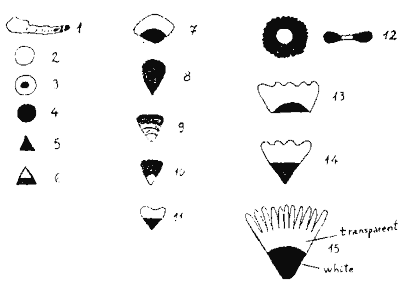 |
Science Frontiers ONLINE No. 130: JUL-AUG 2000 |
|
|
Hailstorms as Imaginative Sculptors
In the south there suddenly appeared a cumulonimbus capillatus whose top seemed to me to be about 14 kilometres or 42 000 feet. As the cloud took on the character of cumulonimbus incus and gradually covered the entire sky, thunder could be heard more and more loudly. The flock of sheep grazing in the deep valley gathered together just as they do before sunset because they too felt the approaching storm. At 16 UT the first raindrops fell. A weak shower of rain followed, and then loose-structured 20-mm-diameter discs of ice. Soon afterwards what was to be 30 minutes of "sky fire" set in. Stone-like pieces of ice streamed to the ground, very heavily and violently. Some of the hailstones were the size of a nut or plum. Within minutes a white carpet covered the plateau of Padis at an altitude of 1200 metres (3900 feet), and the air grew very cool.
The landscape was covered by a milky-white veil of fog which rose from the cold ground to a height of 1 to 1.5 metres to embrace the whole dolomite plateau. Then for three minutes the hailstorm paused, before restarting! It lasted for 55 minutes, and it was in these freezing conditions that I began studying and classifying the pieces or balls of ice.
See author's sketches of the remarkably varied shapes of hail.
(Kosa-hiss, Attila; "Hailstorm at Padis-Plateau, Romania," Journal of Meteorology, U.K., 25:96, 2000.)
Comment. The perennial question is: What mechanism in a hailstorm generates untold millions of copies of a suite of different, often complex, ice shapes?
 | Some of the hailstones that fell in the storm. Of particular interest are the pyramids (5, 6), the discs with transparent centers (12), and the "badminton balls" (15). What force in a violent storm molds these curious shapes in such incredible numbers? |
Other Sites of Interest
|